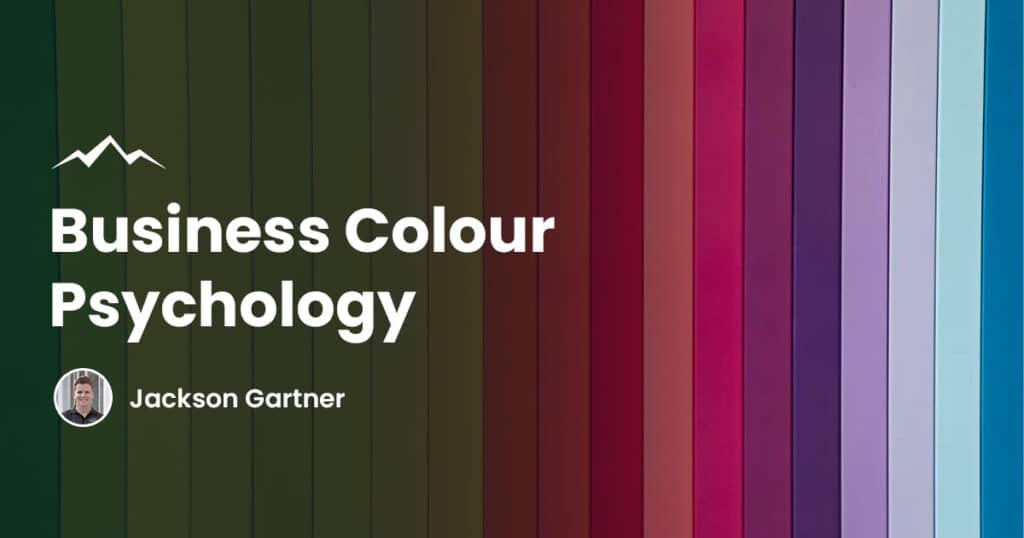Different colours can represent different attributes or evoke different emotions depending on which culture you’re focusing on but today we’ll be discussing the western worlds view on colours.
Learn all about colour psychology with our guide to 16 completely unique colours!
Red
Action, courage, desire, determination, energy, love, passion, potency and power.
Red is a physical colour with its high energy and strength drawing attention to itself and demanding action be taken.
It stimulates and energizes the body, raising your blood pressure and heart rate.
It increases your appetite and therefore can be a great colour for any food product or restaurants and cafes.
On the other hand, red is a universal sign of danger and it can also create anger or aggression when used in the wrong areas.
Orange
Competition, courage, determination, force, productivity, strength, success and vitality.
Orange is a warm, vibrant and flamboyant colour.
It is optimistic, sociable, suggests affordability and inspires enthusiasm.
In business orange gives the impression of affordability, depending on the shade chosen and its combination with other colours but too much can suggest cheapness.
Yellow
Caution, curiosity, happiness, intellect, joy, optimism, vision and warmth.
Yellow is an illuminating and uplifting colour which assists with mental clarity.
It promotes wisdom and inspires original thinking and creative ideas.
Overused, yellow can cause anxiety and nervousness while also making some overly critical or judgmental.
Green
Environmental, growth, healing, luck, nature, tranquility, peace, rebirth, relaxation and youth.
Green is a colour of growth and vitality, associated with new life and renewal.
Darker shades represent wealth and prestige while lighter shades represent growth and freshness.
Too much green can lead to feelings of envy, greed and selfishness however.
Turquoise
Balance, calmness, clarity, communication, compassion, healing and inspiration.
Turquoise balances and recharges the emotions and inspires good communication skills and self-expression.
It can be a good colour for health clinics and practitioners as it balances the emotions and calms the spirit.
Too much turquoise however can can create indecision.
Blue
Authority, confidence, integrity, intelligence, loyalty, peace, reliability, trust, truth and wisdom.
Blue is the most favoured colour globally and is therefore the safest to use.
It relates to trust, honesty and dependability and therefore helps to build customer loyalty.
Blue works well for more conservative businesses such as accountants, insurance companies, banks and other financial companies where trust and reliability are important.
However, too much blue can encourage boredom or a rigid outlook.
Indigo
Faithful, idealism, integrity, obedience, selflessness, sincerity, structure and visionary.
Indigo is a powerful and strong colour which conveys integrity, sincerity and stimulates creativity and intuition.
It imparts a message of great responsibility and high ideals but some see it as depressing or boring.
Purple
Creative, fantasy, humanitarian, intuitive, inventive, mystery, psychic and selfless.
Purple implies wealth, quality, fantasy and creativity.
It heightens people’s sense of beauty and their reaction to more creative ideas.
Too much of the colour can promote or aggravate depression in some individuals.
Magenta
Compassionate, emotions, harmony, imaginative, innovative, kind, love, spiritual and supportive.
Magenta represents compassion and kindness, it encourages a balanced outlook based on common sense.
Lots of magenta can generate arrogance making us feel overwhelmed or irritated.
Pink
Calming, compassion, feminine, hope, innocence, love, nurturing, sweetness and understanding.
Pink inspires compassion and nurturing as it is a non-threatening colour used most often in feminine businesses.
It is feminine and youthful in its softer shades, with more passion and energy in its darker ones.
However it can represent a lack of will power or self-worth when overused.
Gold
Abundance, beauty, expensive, luxury, prestige, quality, value, victory and wealth.
Gold is associated with value, luxury, prestige and reflects wisdom, beauty and generosity.
Paired with purple it can indicate wealth and beauty, with dark blue it suggests trustworthiness and success, black suggests extreme opulence and wealth and white creates an elegant impression.
It can induce great feelings of happiness and bliss or alternatively, deep anxiety and fear.
Silver
Balancing, conservative, distinguished, glamorous, illumination, modern, scientific, sleek and sophisticated.
Silver is a modern and sophisticated colour while still being calming and uplifting.
On packaging it looks sleek, with a coolness that relates well to science and technology.
However, it can be seen as dull, lifeless, cold and insincere.
Black
Authority, contained, control, formal, mysterious, power, protection, seductive, sophisticated and strong.
Black is the colour of power and authority but in excess it can be intimidating and unfriendly.
It is intimidating and controlling, although its power can instill confidence in some.
White
Cleanliness, equality, immaculate, innocence, neat, new, pristine, purity and simplicity.
White amplifies everything and implies efficiency, simplicity, fairness and order.
Its strongest feature is equality, implying fairness, neutrality and independence.
Too much of it can give an impression of sterility, coldness and disinterest.
Grey
Conservative, dignified, inconspicuous, intellect, knowledge, neutral, refined, security and wisdom.
Gray is neutral and conservative but does imply security and reliability.
It serves as a good backdrop for other colours as it doesn’t attract attention, allowing the other colours to take prominence.
It does however lack energy as it is neither reassuring, soothing, stimulating or exciting.
Brown
Comfort, friendly, homely, natural, practical, reassurance, reliable, stability and wholesome.
Brown is a strong, reassuring colour that is comforting and reliable.
It relates well to businesses that promote down-to-earth and outdoor products or activities.
Be aware that many find brown to be boring and too earthy, even dirty.
Key Takeaways
Your brands colours is not something to be taken lightly, what they represent and mean to your business is paramount.
You’ll want to spend some time deciding what best represents your business and evokes the emotions you’re after.
If you’d like to try some different colour combinations yourself I’d recommend you visit Coolors for free and easy to use colour palette generator.
Knowing your brand colours is especially important when it comes to your websites design.
Did you know that 35 – 40% of small businesses don’t have a website?
If you’re one of them, check out this post of ours about 20 benefits a website has on your business or you can reach out to our web design Brisbane team directly!
To your success,
Jackson




